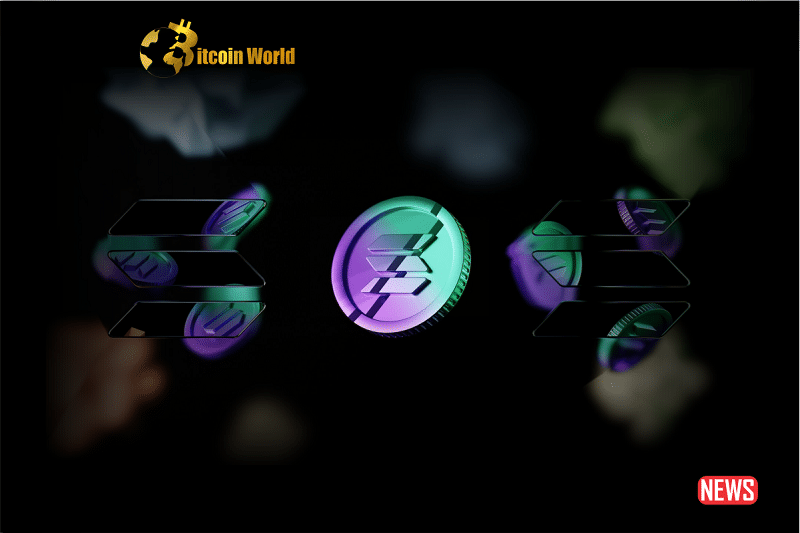Remember the crypto winter chill after the FTX implosion? It hit many hard, and Solana [SOL] seemed to be among the frostbitten. Linked to the disgraced exchange and its former CEO Sam Bankman-Fried, Solana took a brutal 63% nosedive in a single week. Ouch! But the Solana story isn’t one of permanent defeat. Far from it, in fact. Like a phoenix from the ashes, Solana’s decentralized finance (DeFi) ecosystem is showing remarkable signs of a powerful comeback. Let’s dive into how Solana is not just surviving, but thriving in the post-FTX landscape.
Has Solana’s DeFi Scene Truly Recovered?
Here’s the exciting news: Solana’s decentralized exchanges (DEXs) are buzzing with activity again! Think of DEXs as the heart of DeFi, allowing users to trade cryptocurrencies directly with each other, without intermediaries. The numbers speak for themselves:
- In the four months *after* the FTX collapse, Solana DEXs facilitated a whopping $5.57 billion in trades.
- Compare that to the four months *before* the collapse, which saw $5.54 billion in trading volume.
That’s right – Solana’s DEX trading volume has not only recovered but slightly surpassed pre-FTX levels! This surge indicates a strong and renewed interest in Solana’s DeFi offerings. Data from DeFiLlama confirms this positive trend, showing a clear rebound in trading activity after the December dip.
What’s Fueling Solana’s DeFi Revival?
Several factors are contributing to this impressive resurgence:
- Helium’s Migration Boost: The successful migration of the Helium [HNT] network to the Solana blockchain injected significant liquidity into the ecosystem.
- Increased Liquidity: As of the latest data, over $572 million in assets are locked within Solana’s DeFi protocols. This represents an 18% jump from the previous day and marks the highest Total Value Locked (TVL) for Solana in over five months.
- Resilient Community: Despite the challenges, the Solana community has remained active and supportive, fostering innovation and development within the ecosystem.
Decoding the Data: Key Performance Indicators
Let’s break down some key metrics to understand the depth of Solana’s recovery:
Trading Volume: A Clear Sign of Strength
As highlighted earlier, the rebound in DEX trading volume is a significant indicator of health. It shows that users are actively engaging with Solana’s DeFi platforms, finding value in its speed and lower transaction fees compared to some other blockchains.
Total Value Locked (TVL): Money Moving Back In
TVL represents the total value of assets deposited in DeFi protocols on a blockchain. The substantial increase in Solana’s TVL signifies growing confidence in the network and its DeFi applications. More assets locked means more activity and potential for growth.
Transaction Fees: Approaching Pre-FTX Levels
The weekly transaction fees earned on the Solana network are steadily climbing back towards pre-FTX figures, according to Token Terminal. This suggests increasing network utilization and economic activity.

The Road Ahead: Challenges and Opportunities
While the recovery signs are encouraging, it’s important to acknowledge that Solana isn’t completely out of the woods yet.
User Adoption: Still Room to Grow
Interestingly, while trading volume and TVL have rebounded strongly, the number of daily active users on Solana is still lagging. The weekly average hovers around 100,000, a noticeable drop from the 200,000 seen before the FTX collapse. Attracting new users and regaining previous levels will be crucial for sustained growth.
Price Recovery: A Work in Progress
As of the latest update, SOL was trading at $21.85, which is still 41% lower than its price before the FTX crash (according to CoinMarketCap). While the DeFi ecosystem is showing strength, the price recovery for the SOL token itself is taking more time.
Open Interest: A Mixed Signal
Data from Coinglass shows that the nominal value of Solana’s Open Interest (OI) has decreased by approximately 17% over the past two weeks, currently standing at $263 million. OI represents the total number of outstanding derivative contracts, and its decline could indicate a cautious sentiment among traders.
Key Takeaways: What Does This Mean for Solana?
- Resilience is Key: Solana’s DeFi ecosystem has demonstrated remarkable resilience in the face of a significant market shock.
- DeFi Leading the Charge: The recovery is being spearheaded by the strength of its decentralized finance applications.
- Liquidity Matters: The influx of liquidity, particularly from the Helium migration, has played a vital role.
- User Growth a Priority: Focusing on attracting new users and engaging the existing community is crucial for future success.
- Price Follows Fundamentals: Continued positive developments in the DeFi space could eventually translate to a stronger price recovery for SOL.
The Bottom Line: Is Solana Back on Track?
While challenges remain, the data paints a clear picture: Solana’s DeFi ecosystem is not only recovering but showing signs of significant strength. The surge in DEX trading volume and the impressive growth in TVL are powerful indicators of a network that is actively being used and trusted. The road to full recovery might be a marathon, not a sprint, but Solana has undoubtedly taken significant strides forward. Keep an eye on user growth and price action, but for now, the signs from Solana’s DeFi realm are undeniably positive, signaling a robust and potentially brighter future.
Disclaimer: The information provided is not trading advice, Bitcoinworld.co.in holds no liability for any investments made based on the information provided on this page. We strongly recommend independent research and/or consultation with a qualified professional before making any investment decisions.


